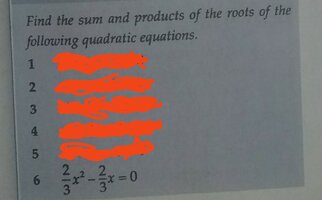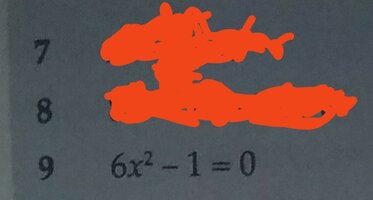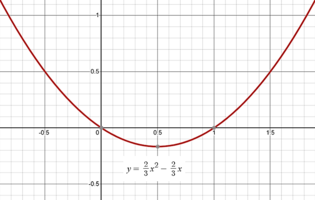quadratic equations are of the form [imath]ax^2+bx+c=0[/imath]
Hi chijioke. I would reword that statement because Quadratic Equations may appear in other forms:
"Any equation that can be written in the form [imath]ax^2+bx+c=0[/imath] is a quadratic equation".
In the forms below, the parameters
[imath]a,b,c,p,q,h,k[/imath] are Real numbers, and
[imath]a[/imath] cannot be zero.
We call
[imath]ax^2+bx+c=0[/imath] the Standard Form.
Intercept Form:
[imath]~a(x - p)(x - q)=0[/imath], where (p,0) and (q,0) are x-intercepts.
Vertex Form:
[imath]~a(x - h)^2+k=0[/imath], where (h,k) is the parabola's vertex.
Later, you may be learning about some other quadratic forms — sometimes called "hidden" forms. Those are not necessarily quadratic equations, but we can solve them after using substitution or simplification to rewrite them in one of the quadratic forms above. Some examples:
\(\displaystyle x^8+7x^4=8\)
\(\displaystyle \bigg(\frac{4}{x}\bigg)\bigg(\frac{x^3}{7}+\frac{2x}{5}\bigg)=\frac{5-x}{35}\)
\(\displaystyle x = \sqrt{x} + 12\)
\(\displaystyle \frac{1}{(3x+1)^2}+5=\frac{6}{3x+1}\)
\(\displaystyle 5^{2x+1}-26(5^x)+5=0\)
Again, you don't need to consider hidden forms now, but be aware that other quadratic forms may be in your future.

[imath]\;[/imath]





